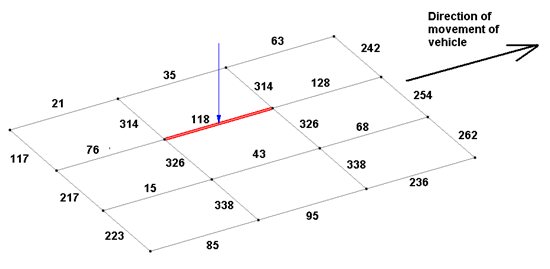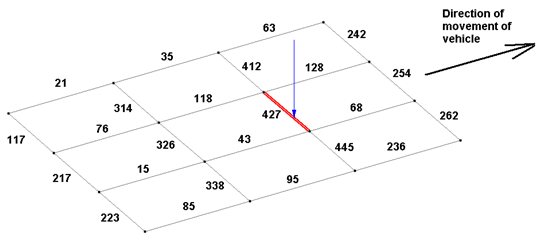| Applies To | |||
| Product(s): | STAAD.Pro | ||
| Version(s): | ALL | ||
| Environment: | ALL | ||
| Area: | Modeling Solutions | ||
| Subarea: | Loading | ||
| Original Author: | Kris Sathia, Bentley Technical Support Group | ||
Question:
How does STAAD.Pro distribute a wheel load onto beams if the wheel is not directly standing on a beam?
Also, what happens when the wheel is standing directly on a beam?
Answer:
Case 1:- Wheel falls in the region enclosed between two longitudinal and two transverse members
If a wheel falls inside a panel composed of beams on either side of the wheel running parallel to the direction of movement of the vehicle, the load is distributed on the 2 beams as simply supported reactions.
In the next figure, assume that the wheel is at the point P. If the load going through that wheel is W, it will be distributed between points Q and R in the following proportion:
Load at Q = Wb/(a+b)
Load at R = Wa/(a+b)

Hence, if the wheel load is 10 kNs, and if the distance from the wheel to the beam on the left is 7m, and the distance to the beam on the right is 3m, the beam on the left gets a 3 kN load, and the beam on the right gets a 7 kN load.
Case 2:- Wheel falls directly on a longitudinal member

The load is applied entirely on the longitudinal member. In the case shown in the figure above, the load is applied entirely on member 118 alone.
Case 3:- Wheel falls directly on a transverse member

The load is applied entirely on the transverse member. In the case shown in the figure above, the load is applied entirely on member 427 alone.